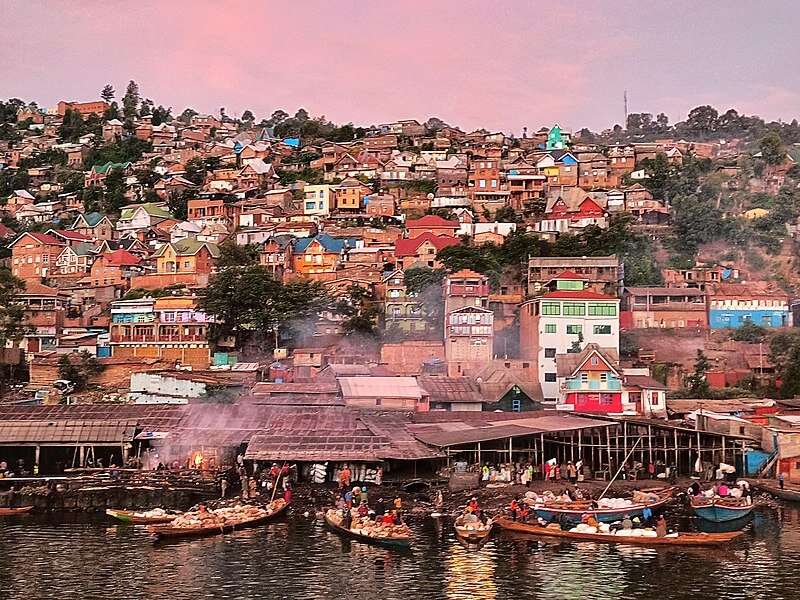December 7, 2022 report
City sprawl responsible for acceleration of deep landslide movement, finds study
An international team of researchers has found that an acceleration in movement of a deep landslide beneath the city of Bukavu, in the Democratic Republic of the Congo, is due to city sprawl, not natural forces. In their study, published in the journal Nature Geoscience, the group analyzed satellite imagery and aerial photographs of the city taken over many years to learn more about the movement of the land beneath the city.
Thin landslides that destroy buildings and carry people to their doom regularly make the headlines. Such landslides typically happen suddenly and involve quickly moving ground, generally after a heavy rainfall. But other types of landslides exist, as well, such as deep-seated landslides that occur tens of meters below the surface and tend to move both slowly and continuously. Their speed is typically related to the amount of moisture beneath the ground, but research has also suggested it can be impacted by the weight of dirt or rock above it, or buildings erected by humans.
In this new effort, the researchers focused their attention on the slow-moving landslide beneath parts of the city of Bukavu. Such parcels of land have been moving for many years due to pressure and water beneath sloped territory. What the researchers wanted to know was whether the landslide is moving at a steady speed, and if not, if any acceleration is due to natural or man-made sources.
To learn more about the landslide, the researchers gathered satellite imagery for the years 2015 to 2019 and photographs of the area where the land is moving taken over the past 70 years from airplanes. In measuring the amount of movement over time, they found that some parts of the city (which has quadrupled in population since 1995) are moving faster than others, and that many areas are moving much faster than they did a half-century ago—up to three times faster. They also found that the sections of ground moving the fastest are those that are the most urbanized.
The researchers suggest that taken together, the evidence strongly implicates human development as the prime factor involved in pushing the deep-seated landslide to move faster than it would have naturally.
More information: Antoine Dille et al, Acceleration of a large deep-seated tropical landslide due to urbanization feedbacks, Nature Geoscience (2022). DOI: 10.1038/s41561-022-01073-3
Journal information: Nature Geoscience
© 2022 Science X Network





















